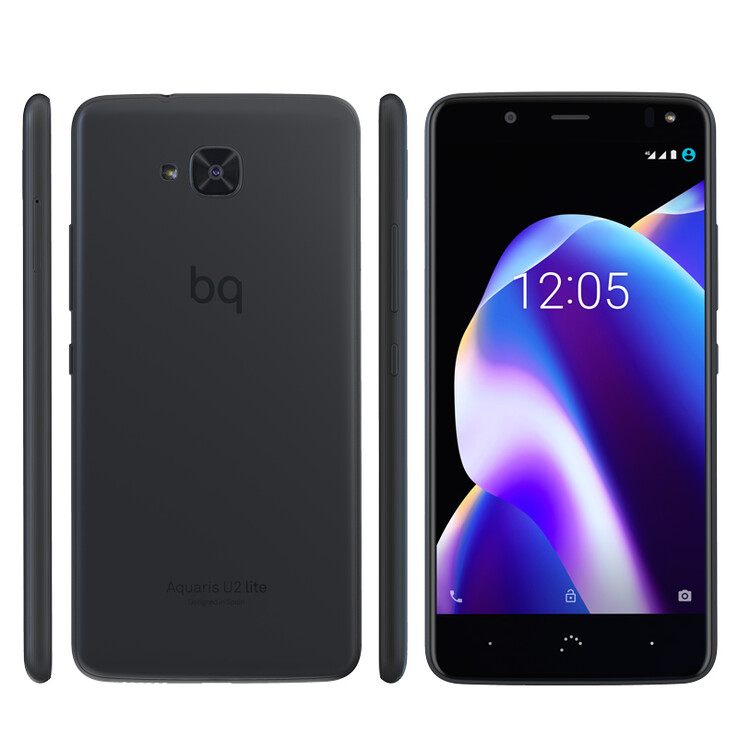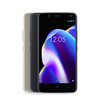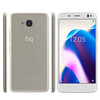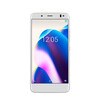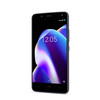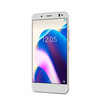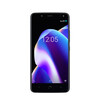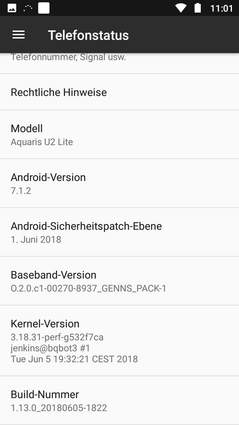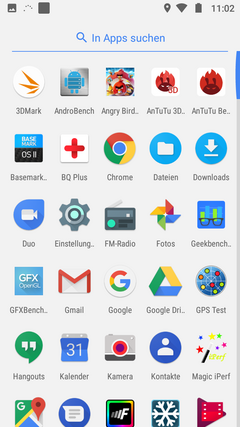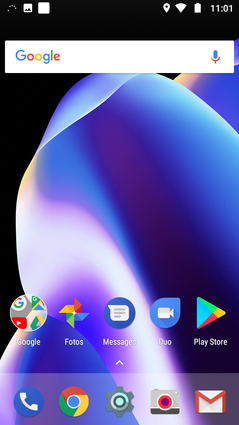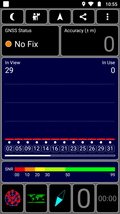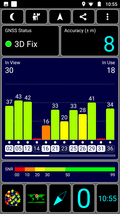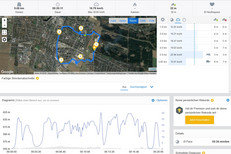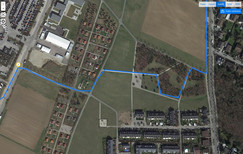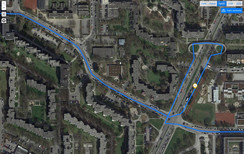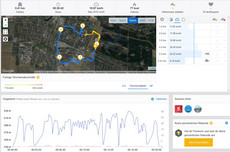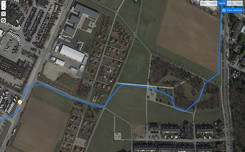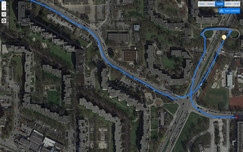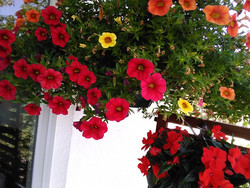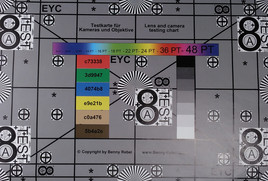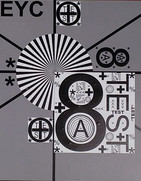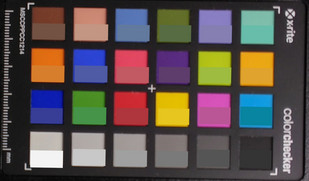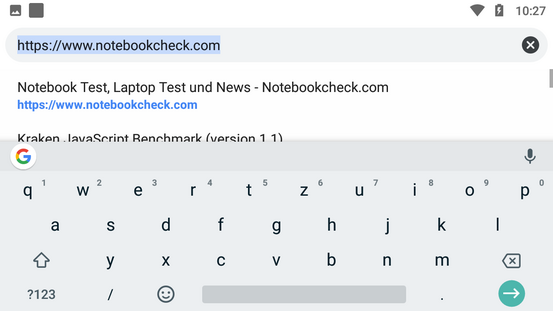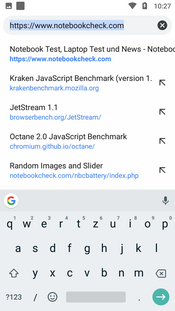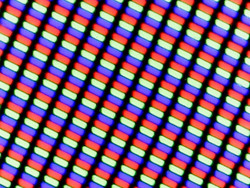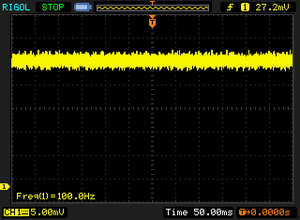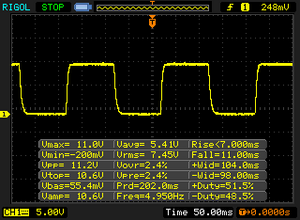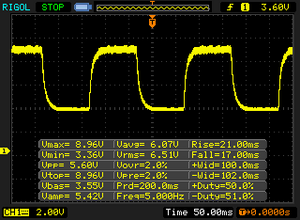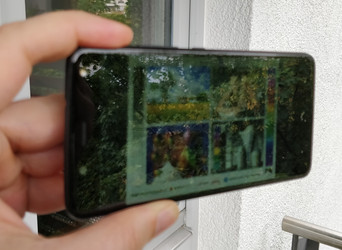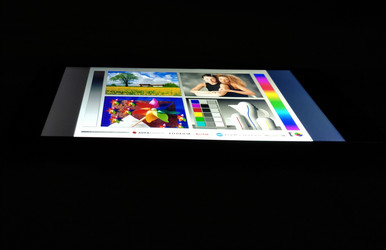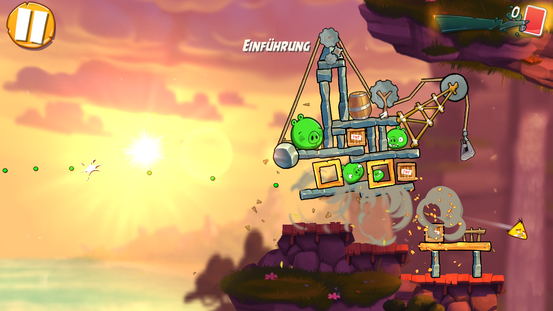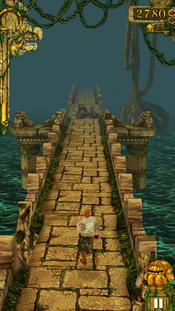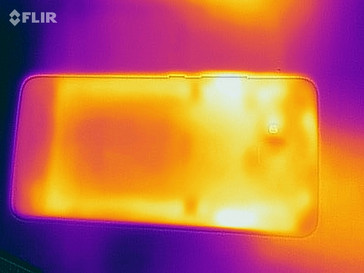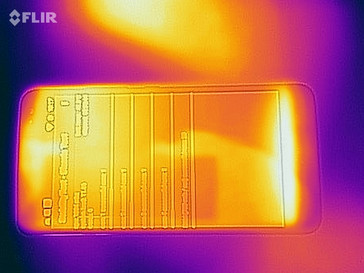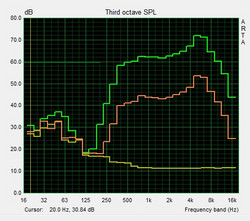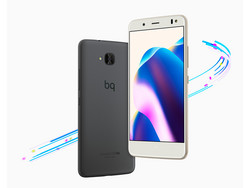BQ Aquaris U2 lite Smartphone Review
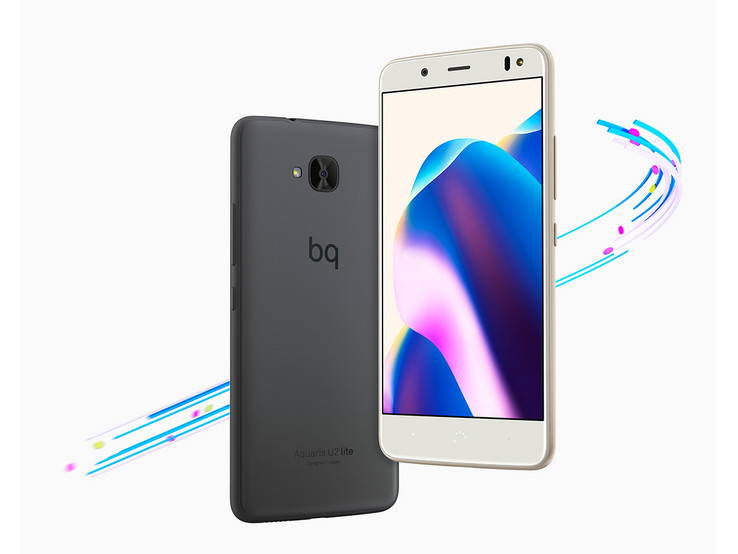
Visually, there are no differences between the BQ Aquaris U2 and the BQ Aquaris U2 lite: The only thing that distinguishes the two devices is the model name on the back. The “lite” model is a slightly cut-down version that costs 20 Euros (~$23) less than the full version. The differences mainly concern the SoC, memory, camera and NFC. The BQ Aquaris U2 lite retails for 179 Euros ($208).
There are a lot of competitors: Besides the mid-range smartphone Sony Xperia AX1, which costs roughly as much as the Aquaris U2 lite, there are also cheaper devices such as the Xiaomi Redmi 5A, the Gigaset GS185 and the Motorola Moto G5s.
Case – Flexible and creaky
The plastic case of the Aquaris U2 lite cannot be opened. Therefore, the battery is not removable. When pressure is applied to the case, it creaks and crackles, which does not bode well for the overall quality of the device. Moreover, applying a lot of pressure to the front or the back of the device leads to screen distortions. The smartphone can also be twisted. However, it does not creak when it is being twisted. The slightly grooved sides and the matte back feel nice. All in all, the device looks as well as any other smartphone in this price range. The BQ Aquaris U2 lite weighs 155 grams (0.34 Ibs), which means that it is not a very light smartphone as the name suggests. The overall dimensions are similar to those of other smartphones in this price range. Because of the 16:9 aspect ratio, there should not be any black bars when watching video.
Connectivity – The Aquaris U2 lite offers enough memory
The Aquaris U2 lite has 2 GB of RAM and 16 GB of internal memory. This is usual for a device in this price range. The internal storage can be expanded by up to 256 GB with the help of a MicroSD card. The SD card can be used as internal memory.
The Aquaris U2 lite has a Micro-USB port that operates at USB 2.0 speeds and supports USB OTG. The smartphone does not feature support for NFC.
Software – BQ smartphone with stock Android
Communication and GPS – Very fast Wi-Fi in the BQ Aquaris U2 lite
Support for 802.11ac is quite unusual in this price range. Most devices, including the pricier Sony Xperia XA1, only support 802.11n. This is a unique feature of the Aquaris U2 lite and it is utilized: Our review device is almost 4 times faster than some competitors. The reception quality is also good, both when the device is in close proximity to the router and when it is separated from the router by a wall.
The BQ smartphone can achieve Category 4 LTE speeds of up to 150 MB/s in the mobile Internet. This is usual in this price range. The Aquaris U2 lite has no problems with reception in Vodafone Germany’s D2 networks, even inside buildings.
| Networking | |
| iperf3 transmit AX12 | |
| BQ Aquaris U2 lite | |
| Sony Xperia XA1 | |
| Motorola Moto G5s | |
| Gigaset GS185 | |
| Xiaomi Redmi 5A | |
| iperf3 receive AX12 | |
| BQ Aquaris U2 lite | |
| Motorola Moto G5s | |
| Sony Xperia XA1 | |
| Gigaset GS185 | |
| Xiaomi Redmi 5A | |
Indoors, the BQ Aquaris U2 lite has a hard time determining the user’s location. Outdoors, geolocation works faster and has a margin of error of 8 meters (~26 ft), which is acceptable. Using Google Maps indoors is difficult. However, outdoors, GPS works well and the compass points in the right direction.
In order to determine how accurate our review device is when it comes to geolocation, we take it with us on a bike ride. During this ride, we are also accompanied by the professional navigator Garmin Edge 500. The BQ smartphone is not as accurate as the professional navigator. However, if you look at the path tracking results, you can see the lane you were travelling on and most of the turns you took. Unfortunately, some of the turns were omitted. This is why there is a 200-meter (~219 yd) difference between the Aquaris U2 lite and the Garmin Edge 500. Nevertheless, the BQ smartphone is still good enough for casual navigation.
Telephony and Call Quality – Somewhat muffled
As a smartphone with stock Android, the Aquaris U2 lite comes with the standard Android phone app.
The smartphone sounds somewhat muffled on both ends. If you turn up the volume, then the Aquaris U2 lite will be loud enough, but a little tinny. The call quality is better in speaker mode. However, the speaker is not loud enough for certain situations. The microphone has trouble picking up the caller’s voice when the caller speaks quietly.
Cameras – The BQ Aquaris U2 lite takes blurry photos
The resolution of the main camera has been slightly increased when compared to the BQ Aquaris U2. The BQ Aquaris U2 lite has one 8 MP camera on the back. The front-facing camera has not changed. The front-facing camera takes colorful pictures, with some detail in bright and dark areas lost. All in all, the level of detail is okay, but not exemplary.
The main camera fails to impress in all three of our test scenarios: The objects as well as the environment are somewhat blurry. The flower looks too dim as well. Photos taken in low-light conditions appear muddy. Video can be shot in Full HD at 30 FPS. Here, the exposure compensation is very snappy and the detail reproduction is also very good.
Under controlled lighting conditions, the camera is somewhat sharper. Apparently, autofocus needs a lot of light to function properly. However, the contours are still blurry. Autofocus failed again when we were taking a picture of our test chart. The colors also appear too dim.
The box contains a charger, a USB cable and a SIM removal tool.
BQ provides a 2-year warranty for its smartphone. A warranty extension can be purchased in the BQ Plus app. Please see our Guarantees, Return policies and Warranties FAQ for country-specific information.
Input Devices and Handling – BQ smartphone with a good touchscreen
Google’s GBoard serves as the default keyboard. Therefore, typing messages and emails is very easy. Other keyboard apps can be downloaded from the Google Play Store.
The touchscreen reacts reliably and promptly to inputs, even at the edges. The navigation keys are located below the screen. The BQ logo serves as the “home” button and the two unlit buttons on either side of it serve as the “back” and “overview” buttons.
The BQ Aquaris U2 lite does not have a fingerprint sensor. The volume rocker and the power button are located on the right side of the device. They respond to inputs reliably and have a clear actuation point.
Display – BQ smartphone with screen flickering
The BQ Aquaris U2 lite has a screen with a 16:9 aspect ratio. The display has a resolution of 1280x720, which is usual for a device in this price range. The Motorola Moto G5s has a Full HD screen, but it is in a different price range. That being said, the Moto G5s does not cost that much more.
The BQ Aquaris U2 lite has a pretty good brightness of 434 cd/m². However, it does not appear very bright when compared to other competing devices. The smartphone has a brightness distribution of 86%. This is not a perfect result, which is why solid colors do not appear very uniform. In the settings menu, the maximum brightness can be increased by 20 cd/m².
| |||||||||||||||||||||||||
Brightness Distribution: 86 %
Center on Battery: 440 cd/m²
Contrast: 957:1 (Black: 0.46 cd/m²)
ΔE ColorChecker Calman: 5.71 | ∀{0.5-29.43 Ø4.77}
ΔE Greyscale Calman: 4.7 | ∀{0.09-98 Ø5}
92.6% sRGB (Calman 2D)
Gamma: 1.954
CCT: 7320 K
| BQ Aquaris U2 lite IPS, 1280x720, 5.2" | Sony Xperia XA1 IPS, 1280x720, 5" | Gigaset GS185 IPS, 1440x720, 5.5" | Xiaomi Redmi 5A IPS, 1280x720, 5" | Motorola Moto G5s IPS, 1920x1080, 5.2" | |
|---|---|---|---|---|---|
| Screen | -8% | -15% | -12% | 11% | |
| Brightness middle (cd/m²) | 440 | 522 19% | 426 -3% | 503 14% | 490 11% |
| Brightness (cd/m²) | 434 | 499 15% | 412 -5% | 499 15% | 502 16% |
| Brightness Distribution (%) | 86 | 92 7% | 86 0% | 84 -2% | 92 7% |
| Black Level * (cd/m²) | 0.46 | 0.74 -61% | 0.7 -52% | 0.73 -59% | 0.43 7% |
| Contrast (:1) | 957 | 705 -26% | 609 -36% | 689 -28% | 1140 19% |
| Colorchecker dE 2000 * | 5.71 | 4.2 26% | 5.3 7% | 5.44 5% | 5.7 -0% |
| Colorchecker dE 2000 max. * | 10.6 | 11.5 -8% | 10.2 4% | 10.01 6% | 7.8 26% |
| Greyscale dE 2000 * | 4.7 | 6.4 -36% | 6.3 -34% | 6.8 -45% | 4.7 -0% |
| Gamma | 1.954 113% | 2.18 101% | 2.4 92% | 2.451 90% | 2.4 92% |
| CCT | 7320 89% | 7044 92% | 8073 81% | 6590 99% | 7526 86% |
* ... smaller is better
Screen Flickering / PWM (Pulse-Width Modulation)
| Screen flickering / PWM detected | 100 Hz | ≤ 10 % brightness setting | |
The display backlight flickers at 100 Hz (worst case, e.g., utilizing PWM) Flickering detected at a brightness setting of 10 % and below. There should be no flickering or PWM above this brightness setting. The frequency of 100 Hz is very low, so the flickering may cause eyestrain and headaches after extended use. In comparison: 53 % of all tested devices do not use PWM to dim the display. If PWM was detected, an average of 8081 (minimum: 5 - maximum: 343500) Hz was measured. | |||
With our oscilloscope, we observed flickering at 10 % brightness and lower. Because the screen flickers with a frequency of 100 Hz, susceptible individuals may experience headaches and eye strain.
The black value of 0.46 cd/m² is a good result. This is why the smartphone takes second place among the comparison devices. The contrast ratio of 957:1 is also okay. The colors do not appear very saturated on the screen. A blue filter is provided, other than that there are no other options to adjust color reproduction.
We use a spectrophotometer running SpectraCal's CalMAN software to examine the color accuracy more closely. The spectrophotometer reveals a turquoise cast. All in all, the colors do not deviate too much from the sRGB spectrum.
Display Response Times
| ↔ Response Time Black to White | ||
|---|---|---|
| 18 ms ... rise ↗ and fall ↘ combined | ↗ 7 ms rise | |
| ↘ 11 ms fall | ||
| The screen shows good response rates in our tests, but may be too slow for competitive gamers. In comparison, all tested devices range from 0.1 (minimum) to 240 (maximum) ms. » 39 % of all devices are better. This means that the measured response time is better than the average of all tested devices (20.2 ms). | ||
| ↔ Response Time 50% Grey to 80% Grey | ||
| 38 ms ... rise ↗ and fall ↘ combined | ↗ 21 ms rise | |
| ↘ 17 ms fall | ||
| The screen shows slow response rates in our tests and will be unsatisfactory for gamers. In comparison, all tested devices range from 0.165 (minimum) to 636 (maximum) ms. » 54 % of all devices are better. This means that the measured response time is worse than the average of all tested devices (31.6 ms). | ||
Performance – The BQ smartphone performs as expected
The BQ Aquaris U2 lite offers a level of performance typical for smartphones in this price range: The Qualcomm Snapdragon 425 is an SoC that is used in several other comparable devices. Because the BQ Aquaris U2 lite uses a two-year-old SoC, it can only keep up with other smartphones that utilize the same SoC. More expensive devices with newer SoCs such as the Sony Xperia XA1 and the Motorola Moto G5s are noticeably faster. The BQ smartphone is quite smooth when scrolling through the menus.
The Adreno 308 serves as the GPU. It performs according to expectations.
| AnTuTu v6 - Total Score (sort by value) | |
| BQ Aquaris U2 lite | |
| Sony Xperia XA1 | |
| Xiaomi Redmi 5A | |
| Gigaset GS185 | |
| Motorola Moto G5s | |
| Average Qualcomm Snapdragon 425 (MSM8917) (29054 - 39106, n=17) | |
| AnTuTu v7 - Total Score (sort by value) | |
| BQ Aquaris U2 lite | |
| Xiaomi Redmi 5A | |
| Gigaset GS185 | |
| Average Qualcomm Snapdragon 425 (MSM8917) (32557 - 46710, n=10) | |
| PCMark for Android | |
| Work performance score (sort by value) | |
| BQ Aquaris U2 lite | |
| Sony Xperia XA1 | |
| Xiaomi Redmi 5A | |
| Gigaset GS185 | |
| Motorola Moto G5s | |
| Average Qualcomm Snapdragon 425 (MSM8917) (3681 - 5253, n=17) | |
| Work 2.0 performance score (sort by value) | |
| BQ Aquaris U2 lite | |
| Sony Xperia XA1 | |
| Xiaomi Redmi 5A | |
| Gigaset GS185 | |
| Motorola Moto G5s | |
| Average Qualcomm Snapdragon 425 (MSM8917) (2829 - 3831, n=18) | |
In the browser benchmarks, the BQ Aquaris U2 lite does a little better than other competing devices in this price range. The websites load relatively fast and the scrolling is smooth. Images do not take very long to load either.
| JetStream 1.1 - Total Score | |
| Sony Xperia XA1 (Chrome 58) | |
| BQ Aquaris U2 lite (Chrome 67) | |
| Motorola Moto G5s (Chrome 62) | |
| Xiaomi Redmi 5A (Chrome 67) | |
| Gigaset GS185 (Chrome 66) | |
| Average Qualcomm Snapdragon 425 (MSM8917) (15.5 - 18.7, n=16) | |
| Octane V2 - Total Score | |
| Average of class Smartphone (2228 - 126661, n=195, last 2 years) | |
| Sony Xperia XA1 (Chrome 58) | |
| BQ Aquaris U2 lite (Chrome 67) | |
| Xiaomi Redmi 5A (Chrome 67) | |
| Gigaset GS185 (Chrome 66) | |
| Motorola Moto G5s (Chrome 62) | |
| Average Qualcomm Snapdragon 425 (MSM8917) (2411 - 3374, n=17) | |
| Mozilla Kraken 1.1 - Total | |
| Gigaset GS185 (Chrome 66) | |
| Average Qualcomm Snapdragon 425 (MSM8917) (10742 - 16192, n=17) | |
| Xiaomi Redmi 5A (Chrome 67) | |
| Motorola Moto G5s (Chrome 62) | |
| BQ Aquaris U2 lite (Chrome 67) | |
| Sony Xperia XA1 | |
| Average of class Smartphone (257 - 28190, n=155, last 2 years) | |
* ... smaller is better
The BQ smartphone achieves very good transfer rates with our reference-grade SD card Toshiba Exceria Pro M501. The internal memory is not very fast though. This is why long loading times are to be expected.
| BQ Aquaris U2 lite | Sony Xperia XA1 | Xiaomi Redmi 5A | Gigaset GS185 | Motorola Moto G5s | Average 16 GB eMMC Flash | Average of class Smartphone | |
|---|---|---|---|---|---|---|---|
| AndroBench 3-5 | 30% | -1% | -8% | 80% | -33% | 2006% | |
| Sequential Read 256KB (MB/s) | 251.7 | 248.5 -1% | 293.8 17% | 275.7 10% | 259 3% | 164.5 ? -35% | 2246 ? 792% |
| Sequential Write 256KB (MB/s) | 75.9 | 127.8 68% | 49.86 -34% | 45.54 -40% | 77.5 2% | 43 ? -43% | 1882 ? 2380% |
| Random Read 4KB (MB/s) | 44.3 | 66.2 49% | 42.32 -4% | 31.71 -28% | 40.6 -8% | 21.7 ? -51% | 298 ? 573% |
| Random Write 4KB (MB/s) | 7.9 | 13.2 67% | 9.28 17% | 9.05 15% | 46.2 485% | 8.08 ? 2% | 346 ? 4280% |
| Sequential Read 256KB SDCard (MB/s) | 84 ? | 78.4 ? -7% | 84.9 ? 1% | 84.3 ? 0% | 84.1 ? 0% | 59.1 ? -30% | |
| Sequential Write 256KB SDCard (MB/s) | 63.9 ? | 68 ? 6% | 62.6 ? -2% | 59.7 ? -7% | 62.3 ? -3% | 39.8 ? -38% |
Gaming – The BQ smartphone is fit for casual games
The BQ Aquaris U2 lite can run somewhat demanding 2D games such as “Angry Birds 2” without any problems. The motion sensor is very responsive in Temple Run. The Aquaris U2 lite cannot render demanding visual effects because it does not support all the latest APIs. That being said, most games are playable. However, if you want to be able to run very demanding games at decent frame rates, then you will have to spend more money on a faster smartphone.
Emissions – The BQ Aquaris U2 lite does not get hot and has an okay speaker
Temperature
Under load, the smartphone becomes noticeably warm. The surface temperatures peak at 41.5 °C (106.7 °F), which is not very hot even in the summer. This is why there should not be any problems related to overheating.
When idle, the smartphone gets a little warm around the bottom chin on the front. However, this is not really noticeable when you hold the device in the hand.
(±) The maximum temperature on the upper side is 41.5 °C / 107 F, compared to the average of 35.2 °C / 95 F, ranging from 21.9 to 247 °C for the class Smartphone.
(+) The bottom heats up to a maximum of 37.5 °C / 100 F, compared to the average of 34 °C / 93 F
(+) In idle usage, the average temperature for the upper side is 29.9 °C / 86 F, compared to the device average of 32.9 °C / 91 F.
Speakers
The mono-speaker is located on the bottom and has a decent maximum volume of 77.9 dB(A). The sound quality does not deteriorate at high volume. All in all, the audio quality is passable: Not 100% clear, but without the overblown highs and with the perceivable lower mids. In conclusion, the speaker sounds good and is suitable for listening to music or watching YouTube videos.
You can get a better sound quality if you use headphones via the 3.5-mm audio jack or external speakers via Bluetooth. Both Bluetooth and the headphone jack work without any problems.
BQ Aquaris U2 lite audio analysis
(±) | speaker loudness is average but good (77.9 dB)
Bass 100 - 315 Hz
(-) | nearly no bass - on average 29.4% lower than median
(±) | linearity of bass is average (14.1% delta to prev. frequency)
Mids 400 - 2000 Hz
(+) | balanced mids - only 1.5% away from median
(+) | mids are linear (3.6% delta to prev. frequency)
Highs 2 - 16 kHz
(±) | higher highs - on average 6% higher than median
(+) | highs are linear (6.2% delta to prev. frequency)
Overall 100 - 16.000 Hz
(±) | linearity of overall sound is average (24.7% difference to median)
Compared to same class
» 59% of all tested devices in this class were better, 7% similar, 34% worse
» The best had a delta of 11%, average was 35%, worst was 134%
Compared to all devices tested
» 75% of all tested devices were better, 5% similar, 20% worse
» The best had a delta of 4%, average was 24%, worst was 134%
Xiaomi Redmi 5A audio analysis
(±) | speaker loudness is average but good (77.1 dB)
Bass 100 - 315 Hz
(-) | nearly no bass - on average 31.8% lower than median
(±) | linearity of bass is average (10.7% delta to prev. frequency)
Mids 400 - 2000 Hz
(+) | balanced mids - only 2.2% away from median
(+) | mids are linear (5.9% delta to prev. frequency)
Highs 2 - 16 kHz
(+) | balanced highs - only 3.1% away from median
(+) | highs are linear (3.1% delta to prev. frequency)
Overall 100 - 16.000 Hz
(±) | linearity of overall sound is average (28.5% difference to median)
Compared to same class
» 74% of all tested devices in this class were better, 4% similar, 22% worse
» The best had a delta of 11%, average was 35%, worst was 134%
Compared to all devices tested
» 86% of all tested devices were better, 3% similar, 12% worse
» The best had a delta of 4%, average was 24%, worst was 134%
Battery Life – The BQ Aquaris U2 lite offers good battery life
Energy Consumption
The BQ Aquaris U2 lite consumes as much power as other smartphones with the same SoC. However, the maximum power draw of 4.3 watts is a little lower than usual. This is not a high value. Nevertheless, the more powerful Sony Xperia XA1 consumes even less energy.
| Off / Standby | |
| Idle | |
| Load |
|
Key:
min: | |
| BQ Aquaris U2 lite 3100 mAh | Sony Xperia XA1 2300 mAh | Gigaset GS185 4000 mAh | Xiaomi Redmi 5A 3000 mAh | Motorola Moto G5s 3000 mAh | Average Qualcomm Snapdragon 425 (MSM8917) | Average of class Smartphone | |
|---|---|---|---|---|---|---|---|
| Power Consumption | 39% | 2% | -3% | -11% | -32% | -52% | |
| Idle Minimum * (Watt) | 1.2 | 0.64 47% | 0.54 55% | 1.2 -0% | 0.67 44% | 1.113 ? 7% | 0.847 ? 29% |
| Idle Average * (Watt) | 1.5 | 0.81 46% | 1.74 -16% | 1.5 -0% | 1.4 7% | 2.19 ? -46% | 1.446 ? 4% |
| Idle Maximum * (Watt) | 1.7 | 0.86 49% | 1.78 -5% | 1.8 -6% | 1.52 11% | 2.55 ? -50% | 1.63 ? 4% |
| Load Average * (Watt) | 3 | 2.09 30% | 3.55 -18% | 2.9 3% | 4.56 -52% | 4.32 ? -44% | 6.95 ? -132% |
| Load Maximum * (Watt) | 4.3 | 3.31 23% | 4.66 -8% | 4.8 -12% | 7.05 -64% | 5.5 ? -28% | 11.3 ? -163% |
* ... smaller is better
Battery Life
The BQ smartphone comes with a sizable 3100-mAh battery. The BQ Aquaris U2 lite achieves 10 h and 39 m in our Wi-Fi test. This is not a bad result. Nevertheless, our review device takes the next-to-last spot in the comparison chart below. The smartphone lasts for one day without any problems. If you use it sparingly it can last for two days.
Because the smartphone supports Quick Charge 3.0, the battery takes 1 h and 40 m to fully charge.
| BQ Aquaris U2 lite 3100 mAh | Sony Xperia XA1 2300 mAh | Xiaomi Redmi 5A 3000 mAh | Gigaset GS185 4000 mAh | Motorola Moto G5s 3000 mAh | |
|---|---|---|---|---|---|
| Battery runtime | 6% | 57% | 3% | -20% | |
| WiFi v1.3 (h) | 10.7 | 11.3 6% | 16.8 57% | 11 3% | 8.6 -20% |
| Reader / Idle (h) | 23.9 | 20.6 | |||
| H.264 (h) | 12.5 | 10.8 | |||
| Load (h) | 4.3 | 3.8 |
Pros
Cons
Verdict – For Internet-surfers, not photographers
With its smartphone, BQ Mobile aims to offer a little bit more than what is usual in this price range. As with the BQ Aquaris X, there are certain aspects with the BQ Aquaris U2 lite that set it apart from the rest of the competition: There are no other smartphones out there that cost less than 200 Euros (~$233) and support the fast 802.11ac standard. The speaker also sounds very good, which is quite uncommon in this price range. Moreover, the smartphone does not become hot, has good battery life and offers the same level of performance as other devices in this price range.
We are not impressed with the creaky, flexible, plastic case and the blurry main camera.
The BQ Aquaris U2 lite is fit for those who like to surf the web. It is not for photographers.
The BQ Aquaris U2 lite is positioned well within its price range. However, the serious competition comes from last year’s mid-range devices, which now cost a little bit more, but offer better performance.
BQ Aquaris U2 lite
- 07/30/2018 v6 (old)
Florian Wimmer


